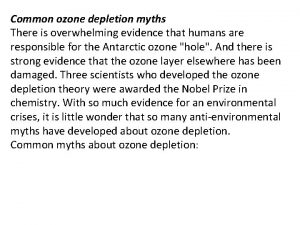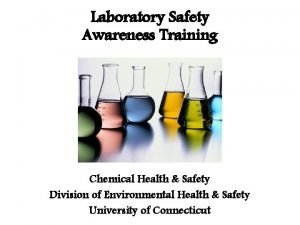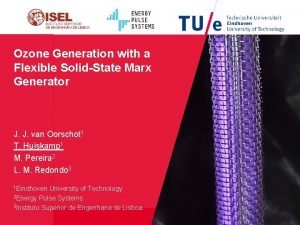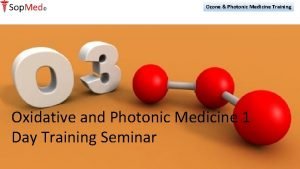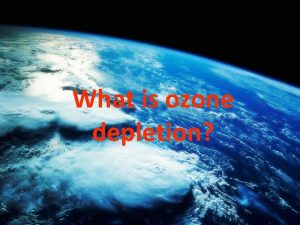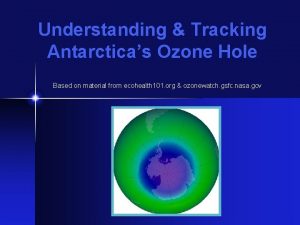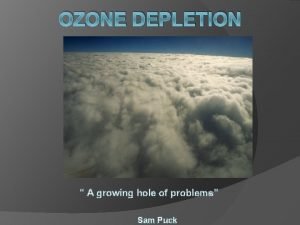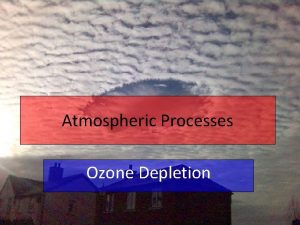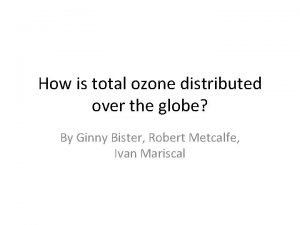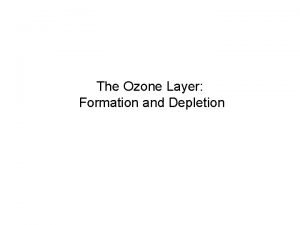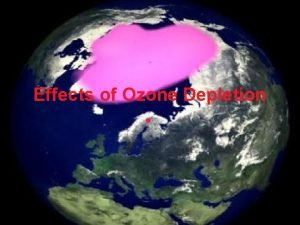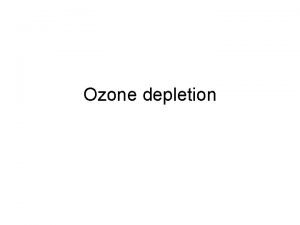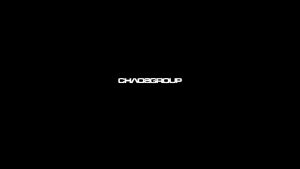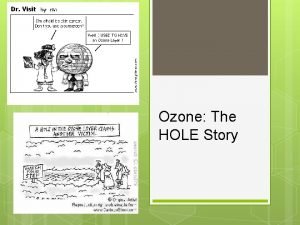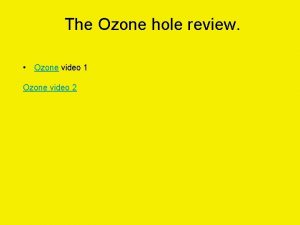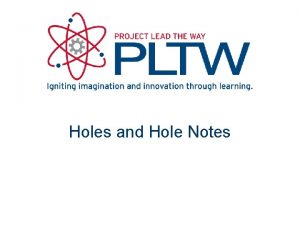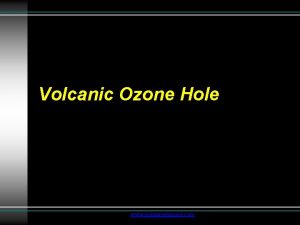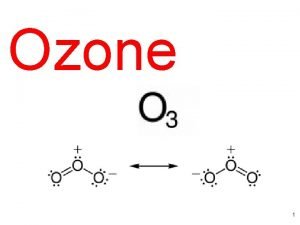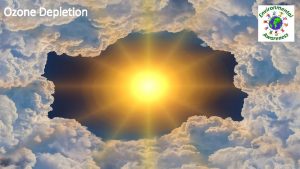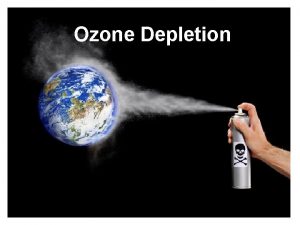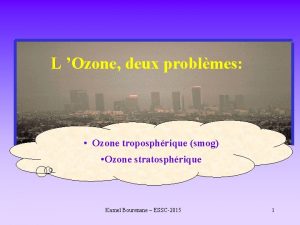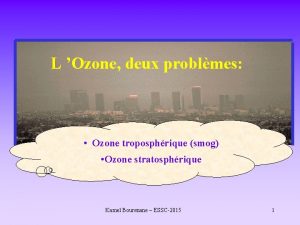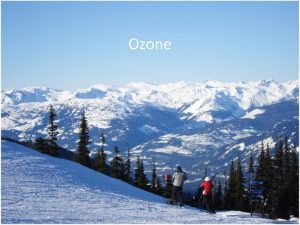THE OZONE HOLE O O O 2016 Paul














- Slides: 14

THE OZONE HOLE O O O © 2016 Paul Billiet ODWS NOAA

Ultra Violet light © 2016 Paul Billiet ODWS

UV light and life UV light is high energy radiation p When it strikes molecules it can cause them to beak into ions or free radicals p The free radicals in turn damage large molecules such as proteins and DNA p Damage to DNA causes mutations p It is a mutagen p Mutations can lead to cancer. p © 2016 Paul Billiet ODWS

UV light and life UV light can have beneficial effects too p It stimulates the transformation dietary steroids into Vit D (calciferol) p UV light is used to sterilise foods and medical equipment p Some animals can see UV light p Insects use it to guide them to nectar sources in flowers. p © 2016 Paul Billiet ODWS

UV light & DNA UV-B has a direct effect on DNA p DNA absorbs UV light of 260 nm p The action of UV forms thymine dimers p This can cause a gene mutation when the DNA replicates. p UV-B DNA ACGCTGGCTTAGT TGCGACCGAATCA © 2016 Paul Billiet ODWS Thymine dimer ACGCTGGCT=TAGT TGCGACCGAATGA

Specific damage by UV light Sunburn p Clouding of the cornea and formation of cataract p Skin cancer (melanoma) p Reduced rates of photosynthesis. p © 2016 Paul Billiet ODWS

Ozone in the atmosphere Ozone (O 3) forms under the effect of UV light in the stratosphere p Ozone can also form in the troposphere p Naturally it forms from volcanic activity p It is produced by motor vehicules so it is a pollutant p Sunlight acts on NOx to produce O 3. p © 2016 Paul Billiet ODWS

Ozone pollution in the troposphere Safety limit © 2016 Paul Billiet ODWS Airparif

The ozone layer Ozone is an unstable gas p It rapidly breaks down p The ozone layer is only a few cm thick p If the rate of breakdown is faster than the rate of formation the ozone layer thins p This could develop into hole p An ozone hole was first observed over the Antarctic in 1985. p © 2016 Paul Billiet ODWS

The cause of the hole p p Chlorofluorocarbons (CFCs) The breakdown under the effect of UV light to release chlorine radicals (Cl) Especially under cold conditions The chlorine radicals react with O 3 converting it to O 2 and more radicals (Cl. O) 2 Cl + 2 O 3 2 Cl. O + 2 O 2 2 Cl. O + M Cl 2 O 2 + M Cl 2 O 2 + sunlight 2 Cl + O 2 © 2016 Paul Billiet ODWS 2 O 3 3 O 2

What are CFCs? Used as propellants in aerosol spray cans p Used as refrigerants in fridges, freezers and air conditioning units. p © 2016 Paul Billiet ODWS

What can be done? Reduce the use of CFCs p They are already banned in aerosols (1987) p BUT they are still used as refrigerants p Recycle fridges and air conditioning plants. p © 2016 Paul Billiet ODWS

The current situation The holes developing over the pole suggest that they may be showing an improvement p BUT CFC molecules take 30 years to rise up to the stratosphere p The chlorine radicals last a long time p The peak ozone damage was supposed to be in 2000 p Damage could go on another 70 years. p © 2016 Paul Billiet ODWS

The biggest yet September 2006 NASA © 2016 Paul Billiet ODWS
 Ozone hole myth
Ozone hole myth Chemical sensitivity symptoms
Chemical sensitivity symptoms Solid state marx generator
Solid state marx generator Sop med
Sop med Protection of ozone layer
Protection of ozone layer Ozone layer depletion introduction
Ozone layer depletion introduction Ozone klavye
Ozone klavye Ozone without borders
Ozone without borders Ozone layer simple definition
Ozone layer simple definition Ozone nasa
Ozone nasa How is total ozone distributed over the globe
How is total ozone distributed over the globe How do cfcs destroy ozone
How do cfcs destroy ozone Ozone depletion effect on humans
Ozone depletion effect on humans Ozone layer
Ozone layer Vray sun sky model
Vray sun sky model
